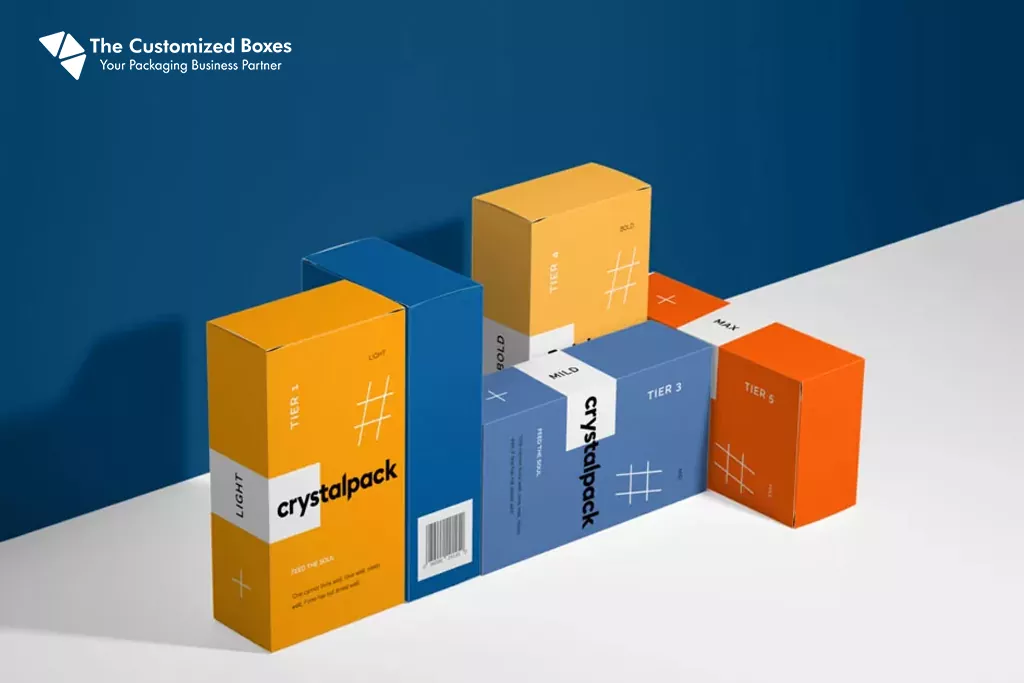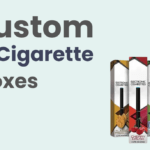A contactless printing technique is digital printing. Since the print picture is sent straight from the computer to the printing machine, no other print media are necessary. The time-consuming press setup is no longer relevant, unlike other printing techniques like offset or flexo printing.
It is equivalent to offset printing in terms of resolution. Therefore, it is perfect for displays and packaging of the highest caliber. It is already well-established for printed materials, including business cards, letterhead, stickers and labels, brochures and flyers, posters and billboards, etc.
Your first opportunity to provide an excellent first impression on customers is often through product packaging. How your items look may make or break a sale, whether physically displayed on a shelf in an actual store or digitally on an online site.
You can fully utilize this valuable real estate by using digital printing for product packaging. It offers an innovative opportunity to make the most of the available advertising area and engage your target market with your brand messaging.
Compared to traditional printing techniques, this printing on boxes enables brand owners to change the package design for their products swiftly.
It works in a variety of applications. You’ve almost certainly engaged with digital printers before, whether at work, high school, or at home. It commonly uses for document printing, so you’ve interacted with one at your business or home.
But what role does digital printing play in packaging? Start the process now!
Exactly What Does Packaging Digital Printing Entail?
It is a direct print technology that uses ink directly into the product packaging. In contrast to traditional printing technologies, most digital printers employ toner and liquid inks that do not sink into the medium they apply.
To produce a clean, high-end finish, UV curing or laser heating attaches the ink to the product packaging. Conversely, conventional print methods like litho lamination and reflexology use ready-made print plates and cylinders to transfer ink to the package’s surface.
The substrate they were put to then partially absorbs the inks. Because this printing does not require creating a print plate before printing, it is excellent for short-run package printing.
Digital printmaking in packaging is the process of sending a digital file (usually a JPEG or PDF file) directly to a printer for use on packaging materials. The digital data transforms into the CMYK color system for more accurate color communication from screen to substrate.
In contrast, to offset printing, digital printers do not require any physical effort to set up, which means no dies or paper rolls are placed. It is widely used in packaging to make reasonably priced samples and prototypes for custom packaging.
It, however, may also be utilized to make some fantastic packaging artwork ideas!
The Function of Packaging Printing Technology
Digital printing is commonly used for packaging to save production costs and time. Digital printers often perform exceptionally well for smaller order runs as setup time, drastically reducing expenses due to the low activity necessary to operate them.
Furthermore, such printing excels at producing minimalist packaging designs since it creates high-caliber work from simpler artwork. When packaging prints digitally, spectacular visual effects that accurately replicate the gradient and features seen in the source design files produces. It can make the whole CMYK color gamut compatible with various paper types, although it works best for particular kinds of paper, such as folding cartons.
Using classic print techniques for more intricate, textured materials like corrugated cardboard or chipboard may be preferable.
The possibilities of digitally printed boxes are numerous. The quality and adaptability of this new, more contemporary printing product packaging are becoming increasingly well-liked as digital production techniques advance. Here are a few explanations why digital printing can be the best option for your packaging requirements.
-
Speed
Digital printing is frequently more cost-effective than offset printing for producing small quantities. For orders of fewer than 100 units, it is a perfect choice!
It again triumphs over flexography and other traditional printing techniques when it comes to examples of bespoke packaging.
The time it takes to get from the design concept to the final product is drastically sped up when you digitally print your product packaging.
It is so that a time-consuming technique avoids digital production uses without creating a print plate. There is no need to wait; digitally printed cartons form soon as needed.
Inkjet printing makes it easier to create package samples, and offset printing, with its cheaper costs and shorter turnaround times, is better for your completed product.
By doing this, businesses may avoid paying more for packaging samples that could need to be modified at the prototype stage and take more time.
-
Cost
It takes a long time and a lot of work to set up a traditional printing process and create print plates. This additional work adds a significant cost premium and lengthens the time required to produce a finished good.
-
Quick prototyping
Digital printing enables the speedy creation of product packaging prototypes, making it simpler to test out different designs and package combinations in a time- and money-efficient manner.
It’s crucial to get the product packaging right, and digital production technology allows you the flexibility you need to innovate. As a result, the company can be sure that the final product will be the one that will appeal to your target market the most.
-
Customer Responsive Designs
Top brands now recognize the value of relationship marketing. Businesses that can successfully connect with their clients are successful. Modern consumers need customized products (and the packaging that goes with them).
The digital printing process naturally supports small, custom product package manufacturing runs. Technology makes it simple for brand owners to design digitally printed boxes tailored to specific holidays, sales, or client groups.
Additionally, printing services facilitate the speedy creation of package prototypes, enabling packaging designers to iterate on new product packaging ideas rapidly and economically. Traditional printing methods make it incredibly challenging to inspire creativity and innovation.
-
Get Rid of Minimum Order Requirements
Digital printing technology enables manufacturers to produce small quantities of product packaging on demand without needing a complicated setup.
The product package design is printed directly onto the board when printing, significantly reducing the manufacturing run’s complexity. In contrast, almost all conventional printers need a minimum order to justify the preparation of the printing equipment.
-
Tends to Encourage Just-in-Time Inventory
The ability to print small volumes of product packaging rapidly and affordably helps firms who want to operate more leanly and effectively.
While being responsive to the constantly shifting demands of their customer, businesses may spend their operational capital more efficiently by keeping less inventory on hand.
-
Less Waste
Digital package printers help cut out unnecessary printing. On the other hand, conventional packaging printing methods can generate a substantial amount of trash. These techniques favor larger runs, often providing product packaging that only partially utilizes.
When a product’s branding or specs change, outdated packaging is recycled or disposed of in landfills. Digital printers, on the other hand, are excellent for producing short runs of product packaging to match the demand. Keeping low-quality packaging on hand can cut expenses and protect working capital.
-
Environmentally Friendly
Digitally produced boxes are better for the environment and your wallet. Compared to traditional printing techniques, this one generates less used ink cartridges that will wind up in landfills forever and cause less air pollution.
Digital Printing Digitizes Analog Packaging Alternatives
With the first substantial release of smartphones in 2007, the globe has been linked online and offline. As a result, the needs of the retail sector have altered substantially. Shopping had to evolve into an experience.
The purchasing groups mirrored the trend, with retail-only and heavy internet shoppers declining dramatically. The number of hybrid shoppers increased markedly. They gather information offline and make purchases online – or vice versa. It increased the need for knowledge as well.
Digital printing utilizes to provide digital data-coded packaging solutions. It is a digital watermark that cannot be seen with the naked eye in the printed image. It has no impact on the printed picture. Such data codes can interact with potential consumers via an app. The data may be scanned using an Internet-connected smartphone or tablet.
Is Digital Packaging Printing Right for You?
For company owners searching for innovative, more cost-effective methods to improve the market attractiveness of their products, digital printing on cartons offers several advantages.
However, this adaptable alternative to more standard product packaging methods is only sometimes the best option for every use. Designers can assist you in realizing your idea since they have years of expertise in product packaging and market understanding.
Conclusion
The digital revolution has changed how we all work; for those who remember a time before email, digital chances have come thick and fast. Digital has created enormous potential for the printing and packaging industries across the process, from design to e-commerce; nearly no element of the chain has been unaffected.
The powers of digital technology are astounding. When used correctly, package designers, converters, packaging manufacturers, and others in the supply chain may communicate in real-time and construct one-of-a-kind exclusives. It even creates perfect packaging that engages customers on social media.







